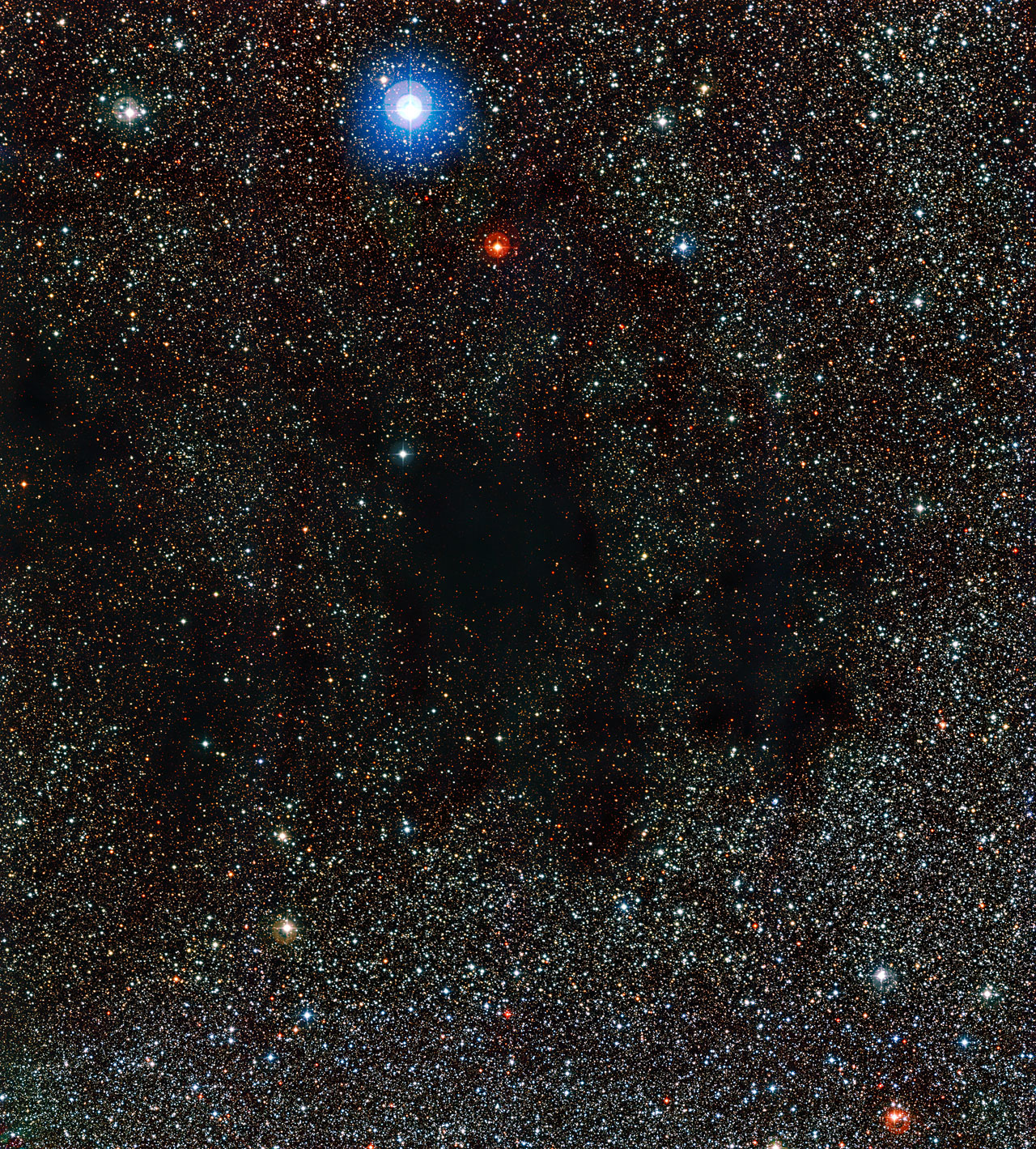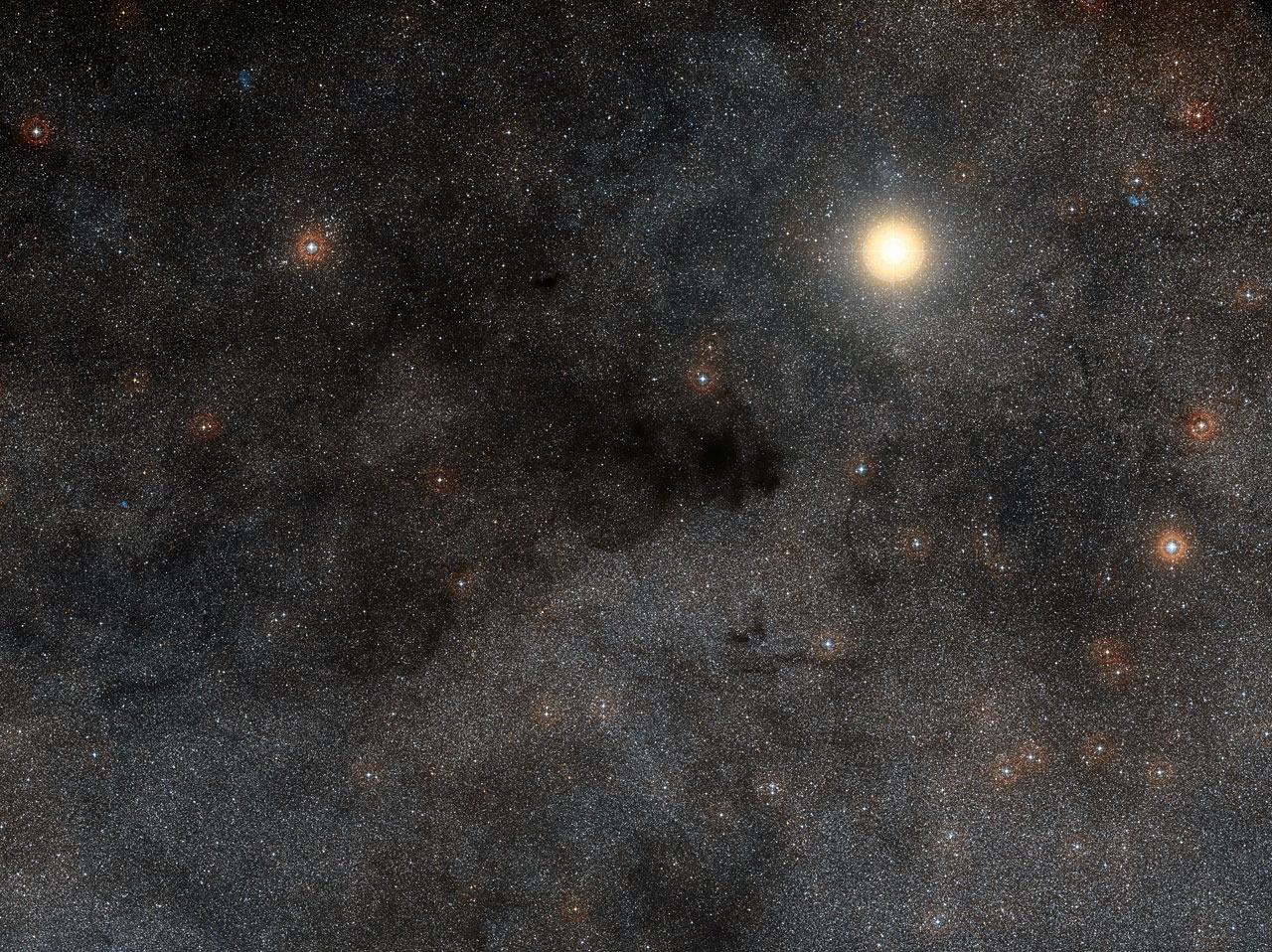Inky Coalsack Nebula Smudges Milky Way in Striking New Views

The enormous, inky smudges of the Coalsack nebula blot out a patch of the brilliant Milky Way in a new image from the European Southern Observatory (ESO) — but someday, that murky realm will burst into light.
You can see a video tour of the Coalsack nebula here, incorporating the new image. The view comes from the MPG/ESO 2.2-meter (7.2 feet) telescope at ESO's La Silla Observatory in Chile.
The nebula can be found at the bottom of the constellation Crux, the Southern Cross, which is particularly visible from the Southern Hemisphere — the constellation even appears on the national flags of Australia, New Zealand, Papua New Guinea, Samoa and Brazil. The nebula lies 600 light-years away from Earth.
Europeans first came to know of the Coalsack nebula in 1499, when it was described by the Spanish explorer Vicente Yáñez Pinzón. It was later nicknamed the "Black Magellanic Cloud," in reference to the two bright Magellanic Clouds, also visible in the southern sky. The Magellanic Clouds are dwarf galaxies near the Milky Way, whereas the Coalsack is simply an immense collection of dust.
The Coalsack's notable darkness, in contrast to other, brightly glowing nebulas, comes from the dust's coating in frozen water, nitrogen, carbon monoxide and other simple organic molecules, ESO officials said in a statement. The particles block visible light from traveling through almost entirely — and the little background starlight that makes it through appears be slightly redder, because the dust scatters blue light more readily than red.

Like all nebulas, the thick, murky dust of the Coalsack may someday burst into light.
"Millions of years in the future, the Coalsack's dark days will come to an end," officials wrote in the same statement. The thick interstellar clouds of dust are fuel for future stars. "As the stray material in the Coalsack coalesces under the mutual attraction of gravity, stars will eventually light up, and the coal 'nuggets' in the Coalsack will 'combust,' almost as if touched by a flame," they wrote.
Get the Space.com Newsletter
Breaking space news, the latest updates on rocket launches, skywatching events and more!
Email Sarah Lewin at slewin@space.com or follow her @SarahExplains. Follow us @Spacedotcom, Facebook and Google+. Original article on Space.com.
Join our Space Forums to keep talking space on the latest missions, night sky and more! And if you have a news tip, correction or comment, let us know at: community@space.com.

Sarah Lewin started writing for Space.com in June of 2015 as a Staff Writer and became Associate Editor in 2019 . Her work has been featured by Scientific American, IEEE Spectrum, Quanta Magazine, Wired, The Scientist, Science Friday and WGBH's Inside NOVA. Sarah has an MA from NYU's Science, Health and Environmental Reporting Program and an AB in mathematics from Brown University. When not writing, reading or thinking about space, Sarah enjoys musical theatre and mathematical papercraft. She is currently Assistant News Editor at Scientific American. You can follow her on Twitter @SarahExplains.









